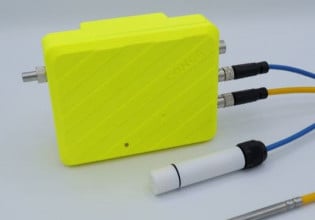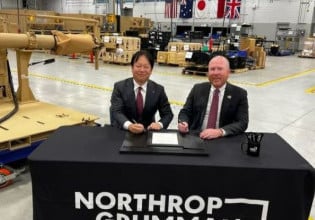Northrop Grumman and Raytheon Technologies Join Forces to Create a Digital Software Factory for Their Inspection Program
The partnership will combine their model-based systems engineering and hardware manufacturing in facilities and conduct risk reduction hardware development and testing.
Northrop Grumman and Raytheon Technologies have received approval from the U.S. Missile Defense Agency for the Control System Requirements Review of the Homeland Defense Interceptor Program.
Northrop Grumman Corporation (Northrop) is a multinational aerospace and defense technology company based in the U.S. The company designs, develops, and manufactures military weaponry and technology.

Employees from Raytheon Technologies and Northrop Grumman aim to create a digital software for the interceptor program. Image used courtesy of Northrop Grumman
Northrop’s main business units include defense systems, aeronautics systems, mission systems, and space systems.
Raytheon Technologies Corporation (Raytheon) is another American multinational company specializing in aerospace and defense. Raytheon produces systems and services for military, industrial, commercial, and government purposes. Its four businesses include Collins Aerospace, Pratt & Whitney, Raytheon Intelligence & Space, and Raytheon Missiles & Defense.
Recently, Northrop announced the completion of its System Requirements Review (SRR), which was also supported by the Raytheon Technologies Next Generation Interceptor (NGI) team. Both Northrop and the Raytheon team are now proceeding with initial system design, further risk reduction testing, and critical component qualification activities.
The Common Software Factory Solution
In early December of this year, the U.S. Missile Defense Agency (MDA) announced the approval of Northrop and NGI’s common software factory solution. The new digital ecosystem brings Northrop, Raytheon, and the MDA into one development environment.
The secure environment was designed to provide a space for the MDA to collaborate with Northrop and Raytheon and oversee code development and release. The NGI common software factory provides tools, process workflows, scripts, and environments configured to produce deployable software artifacts. Little human intervention is required.
In a recent news release, the Vice President of the NGI program, Northrop Grumman, Lisa Brown, said, “By leveraging our company’s digital transformation expertise, we successfully developed, tested, demonstrated, and received customer approval for our NGI software factory in record time.”
Brown added, “This technology enables transparent collaboration between our teams and the MDA during NGI software development, which greatly reduces risk to schedule.”
The Homeland Defense Interceptor Program
Following approval of the NGI common software factory, the MDA has now approved the SSR review for Northrop Grumman and Raytheon Technologies NGI Homeland Defense Interceptor Program.
In another recent news release, the VP and General Manager of Launch and Missile Defense Systems at Northrop, Scott Lehr, commented, “We’re leveraging our two decades of performance on the current Ground-Based Interceptor (GBI).”
Lehr added, “With our combined workforce, extensive expertise, and state-of-the-art facilities, we will deliver a highly capable new interceptor that will protect our nation against long-range missile threats for decades to come.”

The B-2 Stealth Bomber. Image used courtesy of Northrop Grumman
The VP of Strategic Missile Defense at Raytheon Missiles & Defense, Tay Fitzgerald, also said, “Raytheon is the nation’s provider of kill vehicle payloads that maneuver in space to destroy missile threats, with 47 successful exo-atmospheric intercepts achieved to date.” Fitzgerald added, “Our digital system design approach gives us high confidence in our solution going into the preliminary design review.”
In addition to combining high-fidelity model-based systems engineering and hardware manufacturing in customer-certified facilities, the partnership will also involve conducting internally-funded risk reduction hardware development and testing. This will enable the rapid deployment of NGI should the nation need it.






